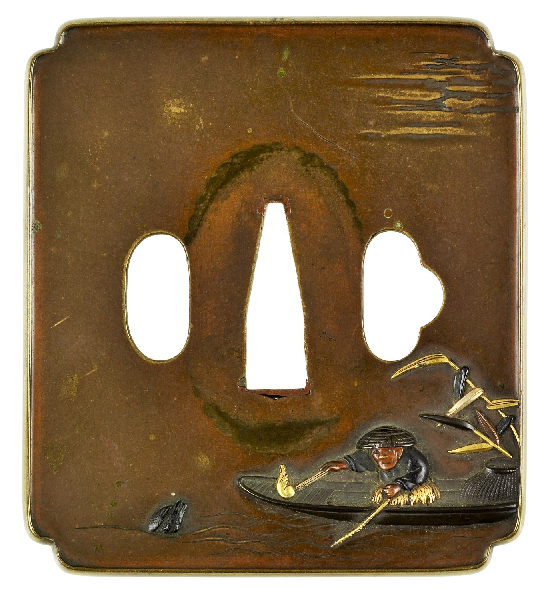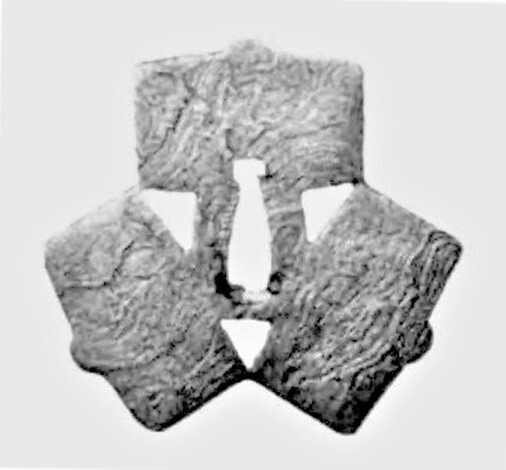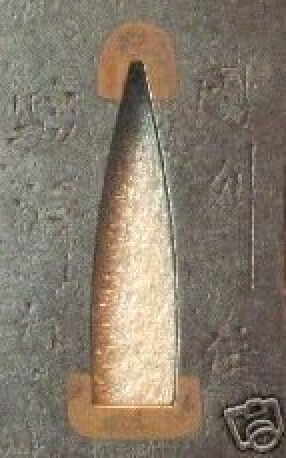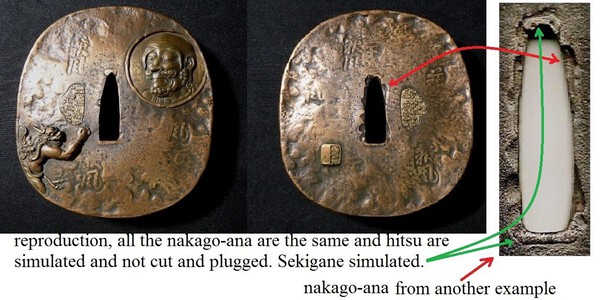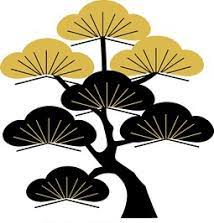-
Posts
3,711 -
Joined
-
Last visited
-
Days Won
100
Content Type
Profiles
Forums
Events
Store
Downloads
Gallery
Everything posted by Spartancrest
-
I would be surprised to see this being sold again so soon. It last sold in July of 2021 as part of the Edward Wrangham collection second sale. It sold at the time for £535.50. https://www.bonhams.com/auction/27271/lot/12/a-brass-tsuba-nara-school-19th-century/
-
I think Colin has it. An alternative is the generic "Tatar" archer https://jameelcentre.ashmolean.org/collection/921/per_page/25/offset/850/sort_by/date/start/1799/end/1898/object/21384 As you say John, there are a few like it getting about.
-
Is it just me or do all these fuchi & kashira look like the boat has run into a mud embankment ?
-
-

Repair/restoration for an important Momoyama Period Owari tsuba?
Spartancrest replied to Iaido dude's topic in Tosogu
-
The small open boat is reasonably common as a theme - often seen with cormorant fishing like this tsuba https://art.thewalters.org/object/51.183/ also seen in some water based battles or river crossings.
-
The way the 'ray' lines don't intersect the slots like spokes should suggest the meaning is something else to me. Like this guard from the Church collection.
-
https://www.jauce.com/auction/1186608762 why pay for the cheap one when people can get ripped off for even more money! I have seen these selling in the past for $800 USD - Now that is organised crime! What past!! Still selling at over the top prices on ebay https://www.ebay.com/itm/355132266401 US $1,108.54 - you do get a box! Recent sale https://buyee.jp/item/jdirectitems/auction/r1000252521?lang=en = $308 USD 1 bidder, poor sod! https://www.thierrydemaigret.com/lot/22009/4944605-tsuba-en-fer-a-fond-martele-de-kanji-a-decor-en-haut-relief? = $1237.05 USD, an even poorer sod! Where do I send my condolences? It doesn't seem to change peoples buying habits, they don't do basic research and still believe the seller's every word. How hard is it today to do an image search?
-
Fantastic find Neil! I have recently tracked down some other tsuba from the Poncetton collection - it just goes to show our collections will outlive us all ! PS. Can I steal your images? [Nice to see my book has been of some use]
-
https://www.jauce.com/auction/p1185822689 From the bidding someone likes it! Interesting to see how high it gets.
-

Repair/restoration for an important Momoyama Period Owari tsuba?
Spartancrest replied to Iaido dude's topic in Tosogu
Well let's not forget the great toilet paper shortage of 2020! https://www.jauce.com/auction/e1185881189 - Papers anyone? Buy in bulk regret at your leisure. -
What about this one? https://www.jauce.com/auction/m1186469424 It has the Jakago but conventional otherwise. Is it a "prequel" to the others or is it an attempt to "rein-in" the decadent after the fact? Why can't these things have date stamps!
-

Old Classic: The Proud Tanuki Tsuba (aka. Dancing Skunk) - Humor
Spartancrest replied to Curran's topic in Tosogu
https://www.jauce.com/auction/o1186258588 Brand new straight from the laser cutter! There must be cheaper ones getting about? -
The third mon reminded me of a tsuba from "Sword-Guards of Feudal Japan" by Gardner Teall, Jan - 1917 The image is of a mokume iron guard - now I know what it represents, thanks Piers As a footnote in 1897 - Lewis Carroll's "The Hunting of the Snark", was illustrated and decorated by Gardner Teall - a tenuous link to tsuba and Wonderland!
-
That is what I have been led to believe - I was once told they were the equivalent to the "Home Guard" - This thread popping up is an odd coincidence as last week I was getting very nostalgic and wanted to buy one of these as I had exchanged mine, for a book years ago. A relatively clean one was selling for 5,000 yen and I was the only bidder - alas the auction was withdrawn at the last second. Re-listed now at a higher price I don't feel it deserves. https://www.jauce.com/auction/t1184599642 I once saw one, that the dealer described as "signed" Ichi - but in reality it was scratched as a single line!! Literally ONE for the books. More of these guards on this thread:
-
Give it a few months and it may darken up. It doesn't take much to scratch the patina off copper which is what I think has happened. As Justyn has pointed out "The changes in colour in the sekigane are likely to have been caused when the piece was removed from the blade. The friction would have scraped any patina off." Speculation on our part of course as we don't have it in hand.
-
Kuchibeni - 口紅 - A speciality of the Suruga school [not the same school as the tsuba in question]. This school is known for 'kuchibeni' or copper sekigane at the top and bottom of the nakago-ana which were placed at time of creation and are not a sign of refitting (kantei point). These were also seen in the later Edo work of the Tanaka School. Those on Jason's example look untouched (rare) and an indication that this piece was fitted only once to it's original sword. As I hope you can see from this slightly grainy image the Kuchibeni were installed in the nakago-ana before it left the tsubaco. Kuchibeni are generally a mark of good quality pieces and like this image they were often fitted with no gaps or protrusions. I also agree with Justyn that the nanako-ji is far too good to be cast. https://jameelcentre.ashmolean.org/collection/7/10237/10353 Check the kuchibeni on many of these Suruga school pieces - they are often altered later to fit other blades. There are indeed many fake or "reproduction" tsuba with fake sekigane but very few with Kuchibeni - Why? well they want the sekigane 'noticed' and good Kuchibeni would be almost invisible if it were the same colour as the rest of the guard.
-
Can you tell what the menuki represent? Part looks like conventionalized 'pine' and other part like crab? I know it is difficult to see under the braiding. The colour doesn't look like silver to me, sentoku? The colour is often the result of the "pickling" process and could be any number of copper alloys. Going only on the style of rim with its banded decoration, the tsuba could be Higo? like this example from David Stiles [2015] but that is just a guess.
-

Old Classic: The Proud Tanuki Tsuba (aka. Dancing Skunk) - Humor
Spartancrest replied to Curran's topic in Tosogu
Guess who is back? https://www.jauce.com/auction/r1185366221 The price is right at the moment 15 yen! Anyone in need of a "Dancing Cat" paperweight? -
https://www.ebay.com/itm/405251827826 A nice big rat on this one Justin. https://www.ebay.com/itm/387696602359 Pretty - - pretty expensive! https://www.jauce.com/auction/o1049691586 https://www.jauce.com/auction/c1138872161 https://www.jauce.com/auction/x1173683901 https://www.jauce.com/auction/1159227877 https://www.jauce.com/auction/m1073156381 a bit rough!
-
I think you mean Gold MENUKI ? [The spelling always gets me a bit confused at times too ] [come to that I am confused most of the time!] Very nice tsuba by the way - excellent detail. Not sure the other fittings actually match but they all seem good quality - I even like the seppa !
-
https://www.gazette-drouot.com/en/lots/28349420-Japan-meiji-period-1868--- You really need to look but there is a rat in the pumpkin on this one. One of mine - either the rats are huge or the rice bales are very small? Carved wood grain Ji - I never could work out why the rats had multicolured fur? Pets?
-
Poncetton book ISBN data: https://www.amazon.com.au/s?k=ISBN%3A+9798349900983&i=stripbooks&crid=150CY31FWQS2G&sprefix=isbn+9798349900983%2Cstripbooks%2C767&ref=nb_sb_noss Why they show the back cover eludes me! https://www.abebooks.com/servlet/SearchResults?cm_sp=SearchF-_-NullResults-_-Results&isbn=9798349900983&kn=9798349900983 &sts=t shipping fee to Australia is ridiculous! I can get the soft cover with shipping to the US for $30 AUD and the hardcover for $42 AUD Softcover ISBN: 9798349900983 Hardcover, ImageWrap ISBN: 9798349900969 An original in French: https://www.abebooks.co.uk/Gardes-Sabre-Japonaises-PONCETTON-Francois-Albert/30105846993/bd






